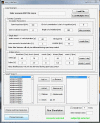In silico preclinical trials: a proof of concept in closed-loop control of type 1 diabetes
- PMID: 19444330
- PMCID: PMC2681269
- DOI: 10.1177/193229680900300106
In silico preclinical trials: a proof of concept in closed-loop control of type 1 diabetes
Abstract
Arguably, a minimally invasive system using subcutaneous (s.c.) continuous glucose monitoring (CGM) and s.c. insulin delivery via insulin pump would be a most feasible step to closed-loop control in type 1 diabetes mellitus (T1DM). Consequently, diabetes technology is focusing on developing an artificial pancreas using control algorithms to link CGM with s.c. insulin delivery. The future development of the artificial pancreas will be greatly accelerated by employing mathematical modeling and computer simulation. Realistic computer simulation is capable of providing invaluable information about the safety and the limitations of closed-loop control algorithms, guiding clinical studies, and out-ruling ineffective control scenarios in a cost-effective manner. Thus computer simulation testing of closed-loop control algorithms is regarded as a prerequisite to clinical trials of the artificial pancreas. In this paper, we present a system for in silico testing of control algorithms that has three principal components: (1) a large cohort of n=300 simulated "subjects" (n=100 adults, 100 adolescents, and 100 children) based on real individuals' data and spanning the observed variability of key metabolic parameters in the general population of people with T1DM; (2) a simulator of CGM sensor errors representative of Freestyle Navigator™, Guardian RT, or Dexcom™ STS™, 7-day sensor; and (3) a simulator of discrete s.c. insulin delivery via OmniPod Insulin Management System or Deltec Cozmo(®) insulin pump. The system has been shown to represent adequate glucose fluctuations in T1DM observed during meal challenges, and has been accepted by the Food and Drug Administration as a substitute to animal trials in the preclinical testing of closed-loop control strategies.
Keywords: computer simulation; diabetes control; modeling.
© Diabetes Technology Society
Figures






Similar articles
-
Overnight closed-loop insulin delivery with model predictive control: assessment of hypoglycemia and hyperglycemia risk using simulation studies.J Diabetes Sci Technol. 2009 Sep 1;3(5):1109-20. doi: 10.1177/193229680900300514. J Diabetes Sci Technol. 2009. PMID: 20144424 Free PMC article.
-
Simulation environment to evaluate closed-loop insulin delivery systems in type 1 diabetes.J Diabetes Sci Technol. 2010 Jan 1;4(1):132-44. doi: 10.1177/193229681000400117. J Diabetes Sci Technol. 2010. PMID: 20167177 Free PMC article.
-
Developing the UVA/Padova Type 1 Diabetes Simulator: Modeling, Validation, Refinements, and Utility.J Diabetes Sci Technol. 2023 Nov;17(6):1493-1505. doi: 10.1177/19322968231195081. Epub 2023 Sep 25. J Diabetes Sci Technol. 2023. PMID: 37743740 Free PMC article. Review.
-
The university of Virginia/Padova type 1 diabetes simulator matches the glucose traces of a clinical trial.Diabetes Technol Ther. 2014 Jul;16(7):428-34. doi: 10.1089/dia.2013.0377. Epub 2014 Feb 26. Diabetes Technol Ther. 2014. PMID: 24571584 Free PMC article.
-
Diabetes technology and treatments in the paediatric age group.Int J Clin Pract Suppl. 2011 Feb;(170):76-82. doi: 10.1111/j.1742-1241.2010.02582.x. Int J Clin Pract Suppl. 2011. PMID: 21323816 Review.
Cited by
-
Simulation Software for Assessment of Nonlinear and Adaptive Multivariable Control Algorithms: Glucose - Insulin Dynamics in Type 1 Diabetes.Comput Chem Eng. 2019 Nov 2;130:106565. doi: 10.1016/j.compchemeng.2019.106565. Epub 2019 Sep 2. Comput Chem Eng. 2019. PMID: 32863472 Free PMC article.
-
A simple robust method for estimating the glucose rate of appearance from mixed meals.J Diabetes Sci Technol. 2012 Jan 1;6(1):153-62. doi: 10.1177/193229681200600119. J Diabetes Sci Technol. 2012. PMID: 22401334 Free PMC article.
-
Mathematical Models of Meal Amount and Timing Variability With Implementation in the Type-1 Diabetes Patient Decision Simulator.J Diabetes Sci Technol. 2021 Mar;15(2):346-359. doi: 10.1177/1932296820952123. Epub 2020 Sep 17. J Diabetes Sci Technol. 2021. PMID: 32940087 Free PMC article.
-
Population physiology: leveraging electronic health record data to understand human endocrine dynamics.PLoS One. 2012;7(12):e48058. doi: 10.1371/journal.pone.0048058. Epub 2012 Dec 14. PLoS One. 2012. PMID: 23272040 Free PMC article.
-
An Updated Organ-Based Multi-Level Model for Glucose Homeostasis: Organ Distributions, Timing, and Impact of Blood Flow.Front Physiol. 2021 Jun 1;12:619254. doi: 10.3389/fphys.2021.619254. eCollection 2021. Front Physiol. 2021. PMID: 34140893 Free PMC article.
References
-
- Pfeiffer EF, Thum C, Clemens AH. The artificial beta cell—a continuous control of blood sugar by external regulation of insulin infusion (glucose controlled insulin infusion system) Horm Metab Res. 1974;6(5):339–342. - PubMed
-
- Albisser AM, Leibel BS, Ewart TG, Davidovac Z, Botz CK, Zingg W. An artificial endocrine pancreas. Diabetes. 1974;23(5):389–396. - PubMed
-
- Clemens AH, Chang PH, Myers RW. The development of Biostator, a glucose-controlled insulin infusion system. Horm Metab Res. 1977;(Suppl 7):23–33. - PubMed
-
- Marliss EB, Murray FT, Stokes EF, Zinman B, Nakhooda AF, Denoga A, Leibel BS, Albisser AM. Normalization of glycemia in diabetics during meals with insulin and glucagon delivery by the artificial pancreas. Diabetes. 1977;26(7):663–672. - PubMed
-
- Santiago JV, Clemens AH, Clarke WL, Kipnis DM. Closed-loopand open-loop devices for blood glucose control in normal and diabetic subjects. Diabetes. 1979;28(1):71–84. - PubMed
Publication types
MeSH terms
Substances
Grants and funding
LinkOut - more resources
Full Text Sources
Other Literature Sources
Medical

